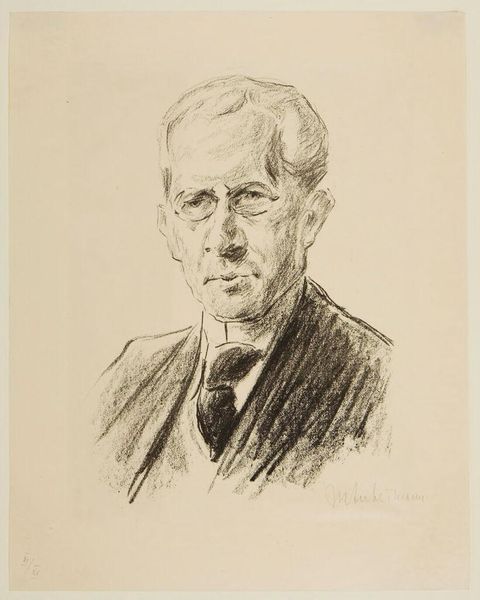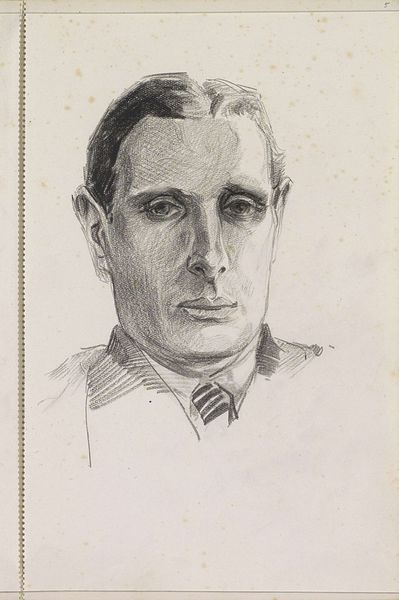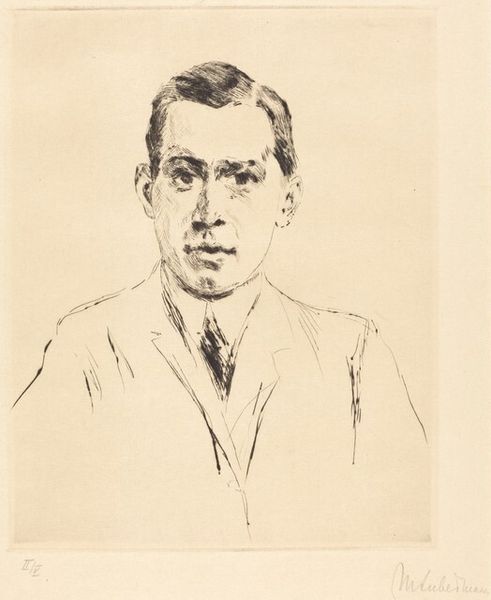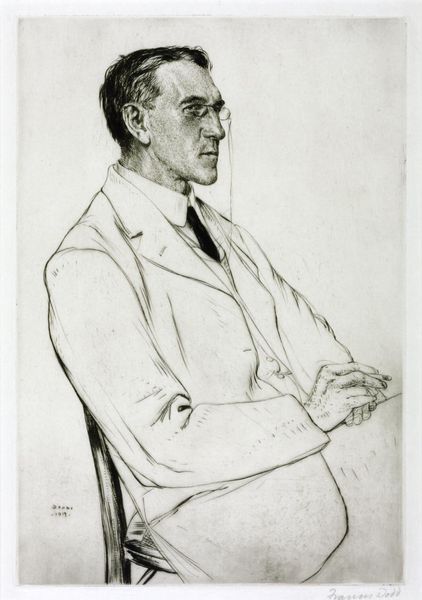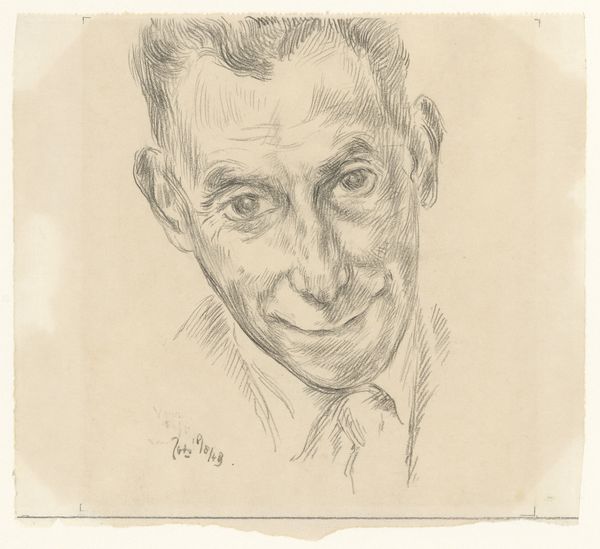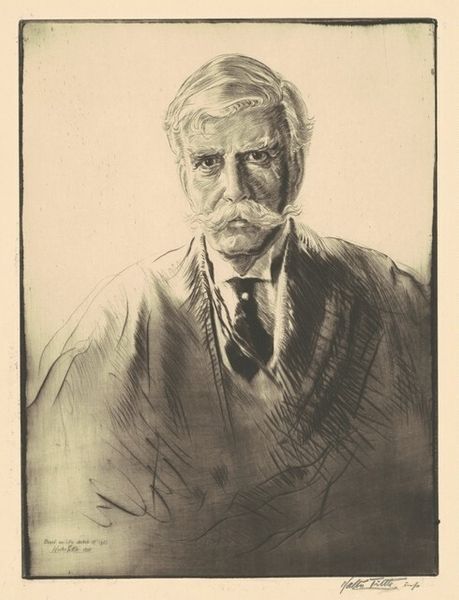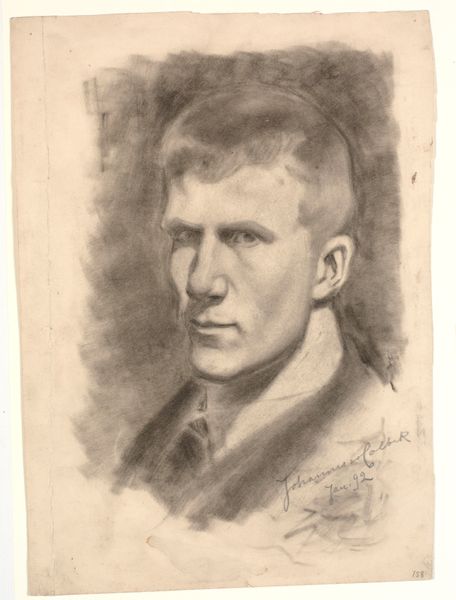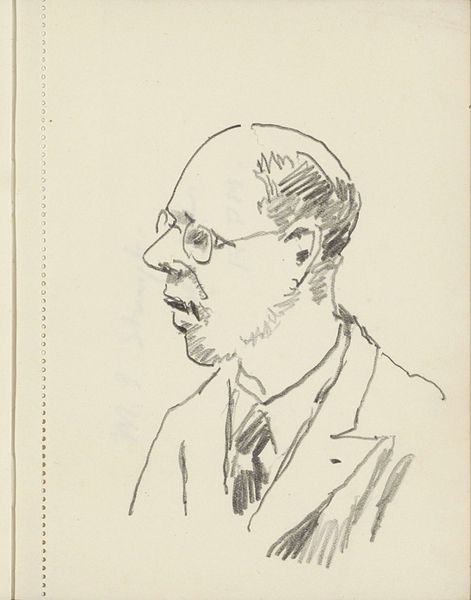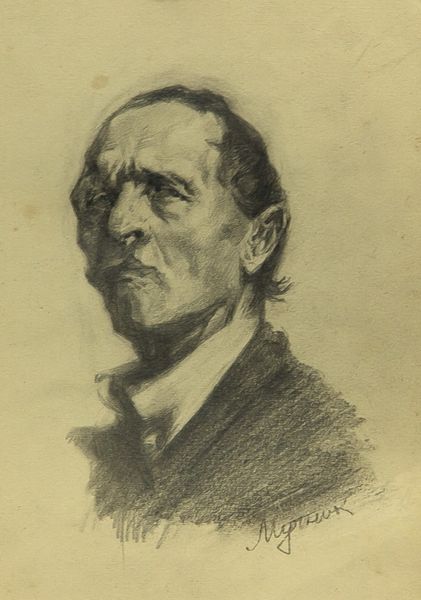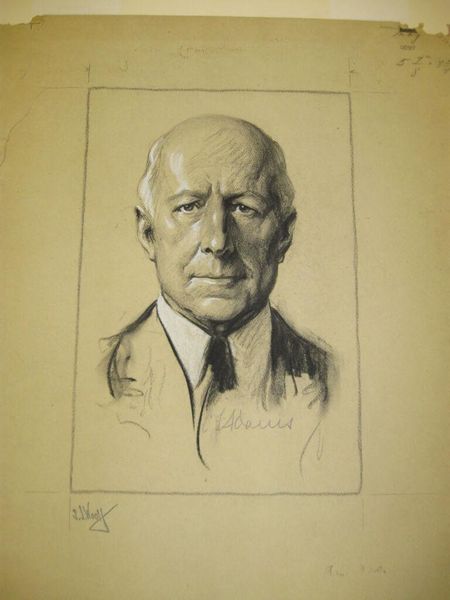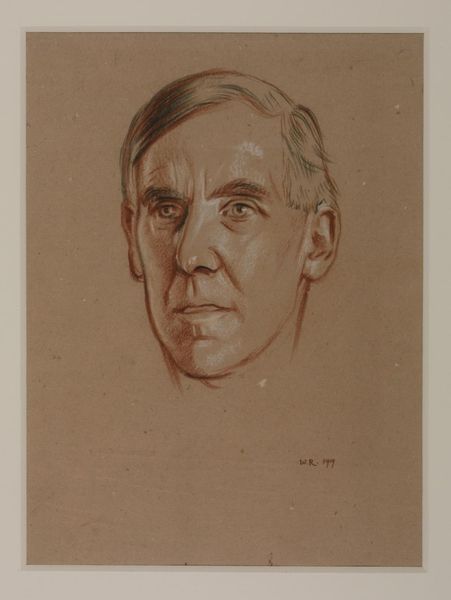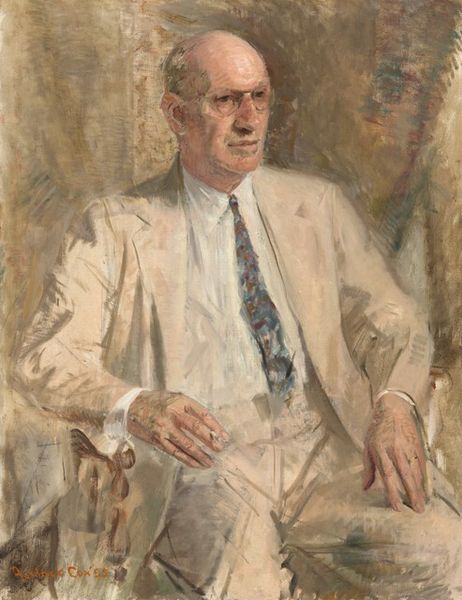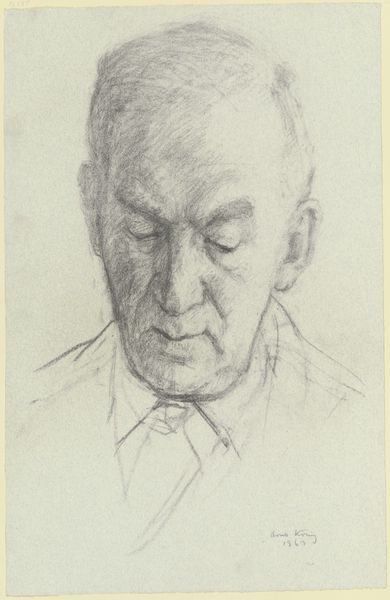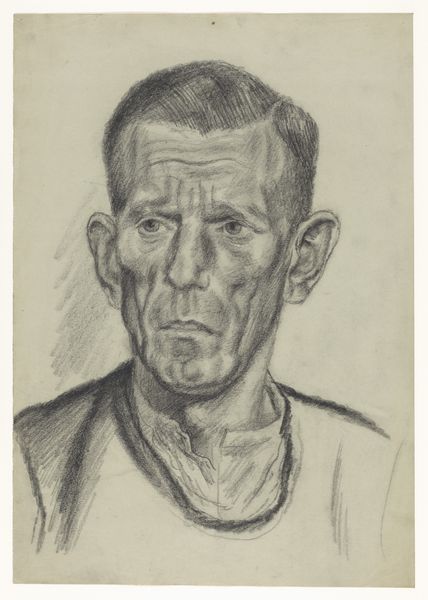
drawing, charcoal
#
portrait
#
pencil drawn
#
drawing
#
german-expressionism
#
charcoal drawing
#
pencil drawing
#
portrait drawing
#
charcoal
#
modernism
Copyright: Public Domain: Artvee
Editor: We're looking at Max Liebermann's "Portrait Arno Holz," made in 1923 using charcoal and pencil. It strikes me as a very direct and somewhat austere depiction. What stands out to you about this particular piece? Curator: Notice the intense use of charcoal and pencil – seemingly humble materials – to capture the essence of Arno Holz. Liebermann, rooted in modernism and influenced by German Expressionism, doesn't shy away from showcasing the raw process. We see the artist’s hand, the labor involved in creating the image. Do you think the medium impacts how we perceive Holz? Editor: Definitely! A painted portrait might feel more formal, more idealized. The pencil and charcoal feel more immediate, like a quick study, revealing the subject's personality through the artist's rapid marks. Curator: Exactly. It pushes us to consider the socio-economic aspect of art production, too. Liebermann chose accessible, readily available materials. How might that choice democratize the process, blurring lines between "high art" and the everyday practice of drawing? What does it say about the role and value of labor in art? Editor: I see what you mean. It’s almost a rejection of precious materials in favor of something more… honest? The materials draw focus onto Liebermann’s skill in portraying expression through such simple media. Curator: Indeed. By emphasizing the means of production, Liebermann encourages us to analyze the social context in which the artwork was made and received, which challenges our established concepts around the definition of portraiture in 1920s Germany. Editor: I never considered how much the materials themselves can contribute to the social meaning of a portrait. This deeper consideration is really invaluable, thank you. Curator: My pleasure, seeing art through the lens of materiality and production unveils often overlooked facets of artistic creation and social history.
Comments
No comments
Be the first to comment and join the conversation on the ultimate creative platform.
